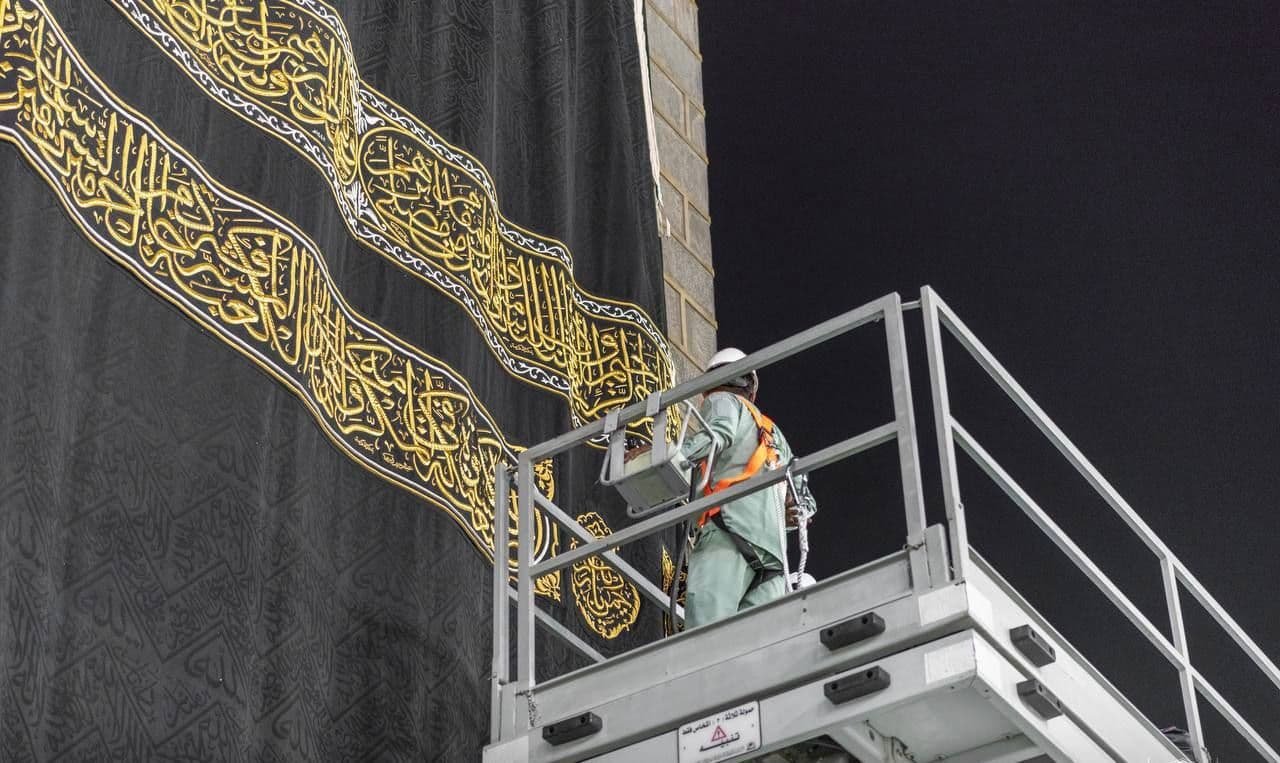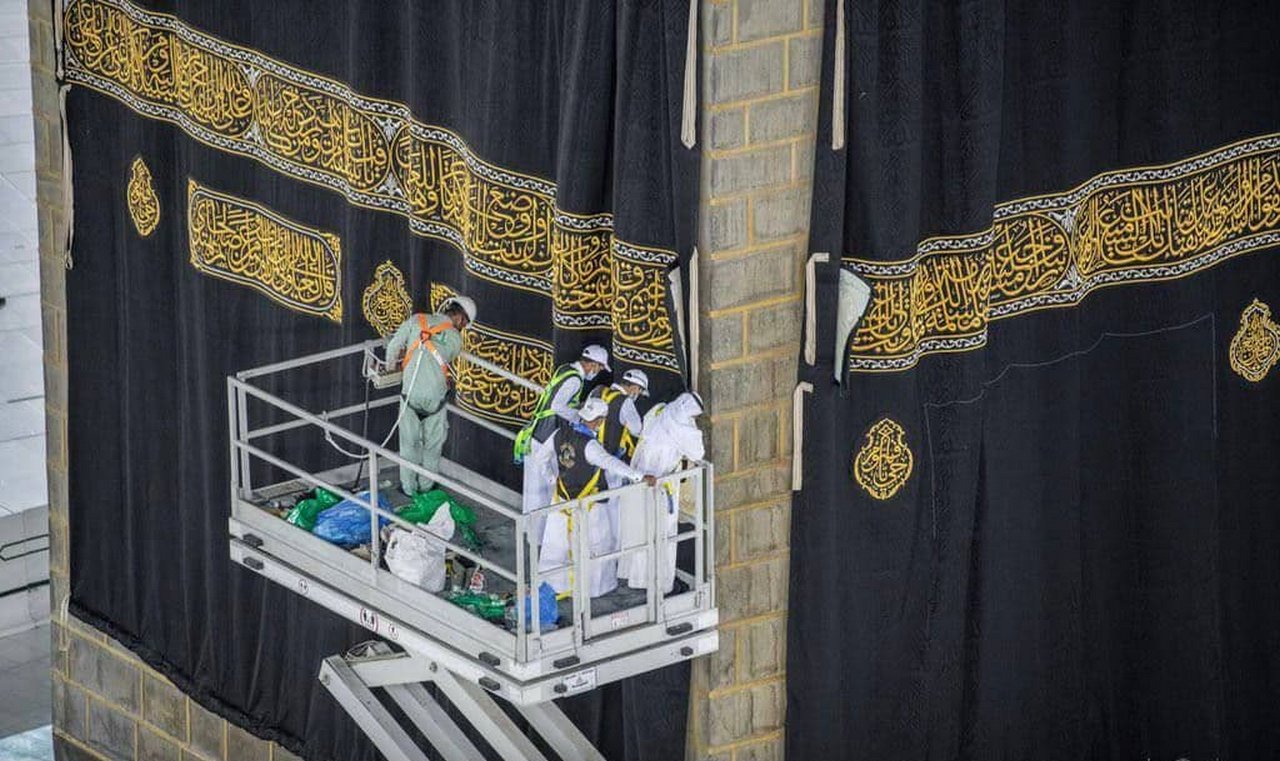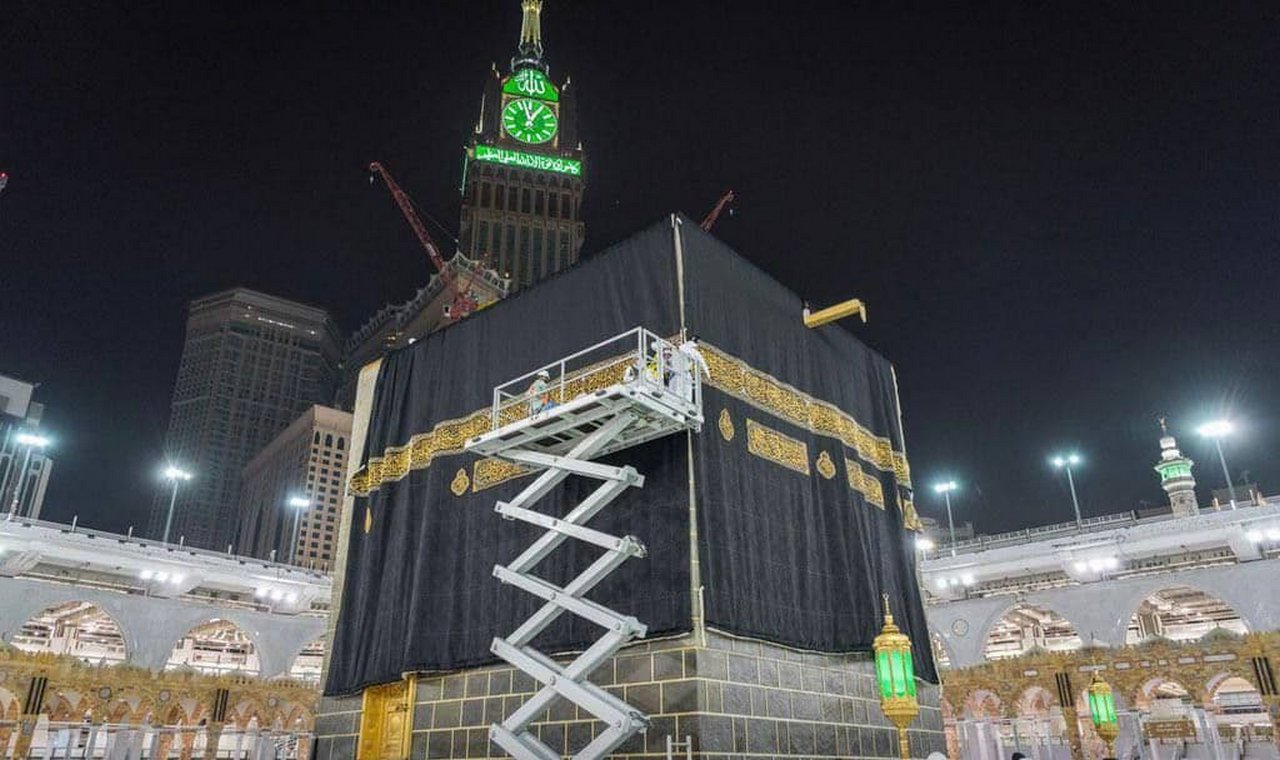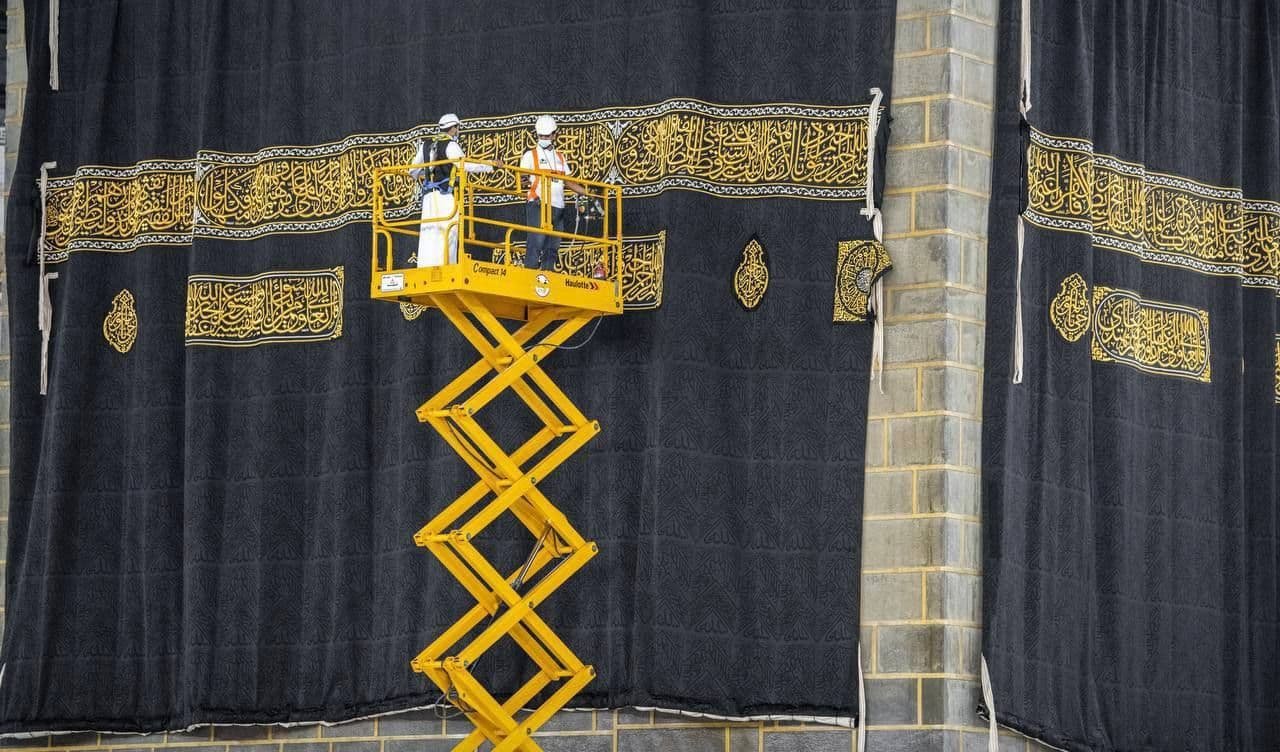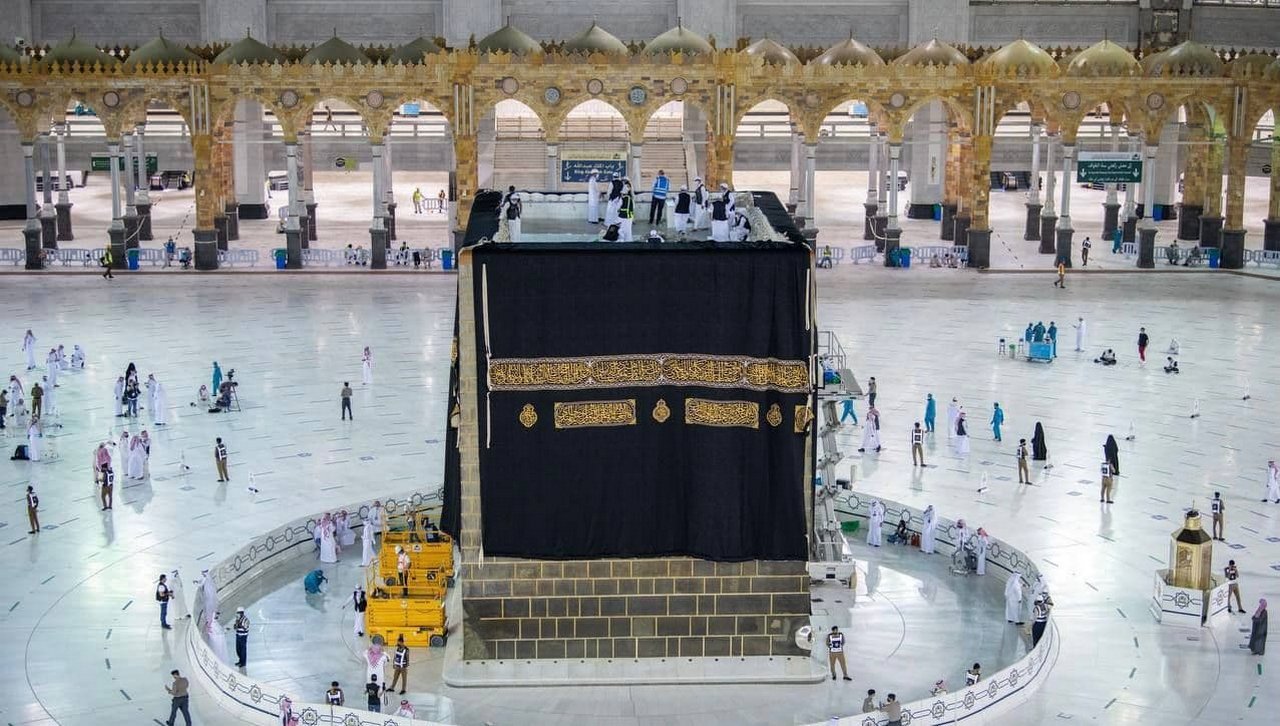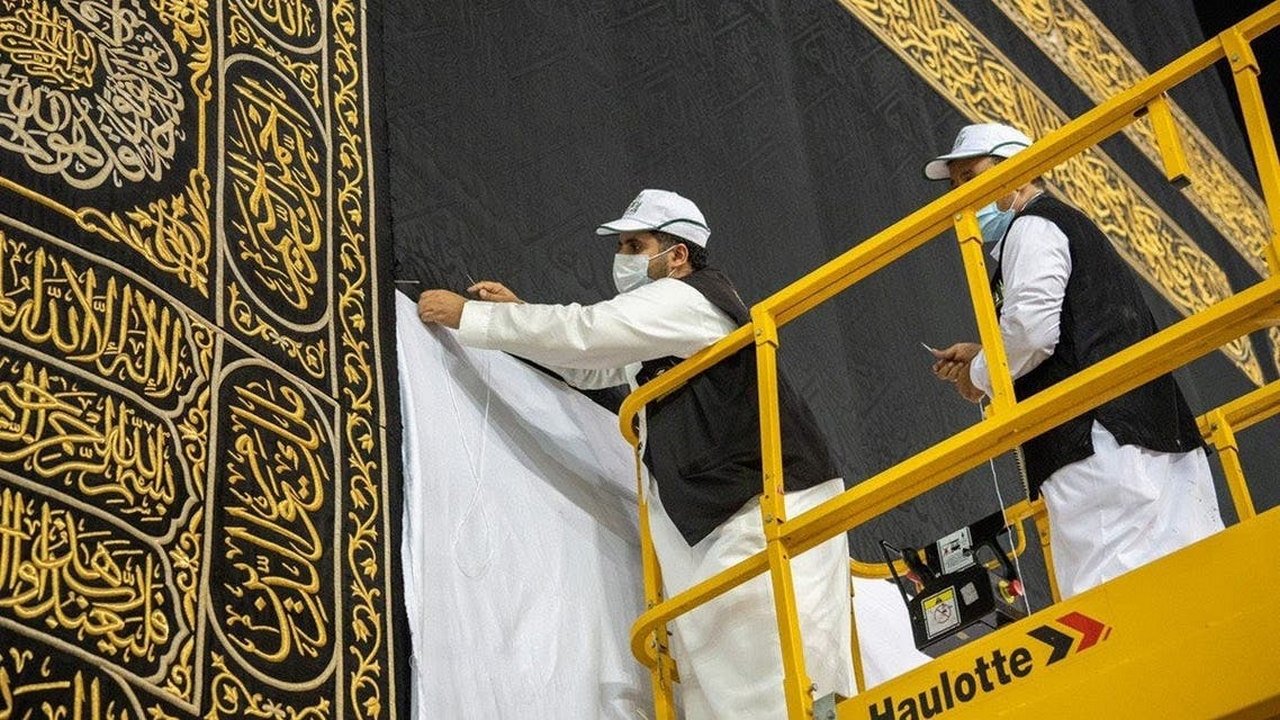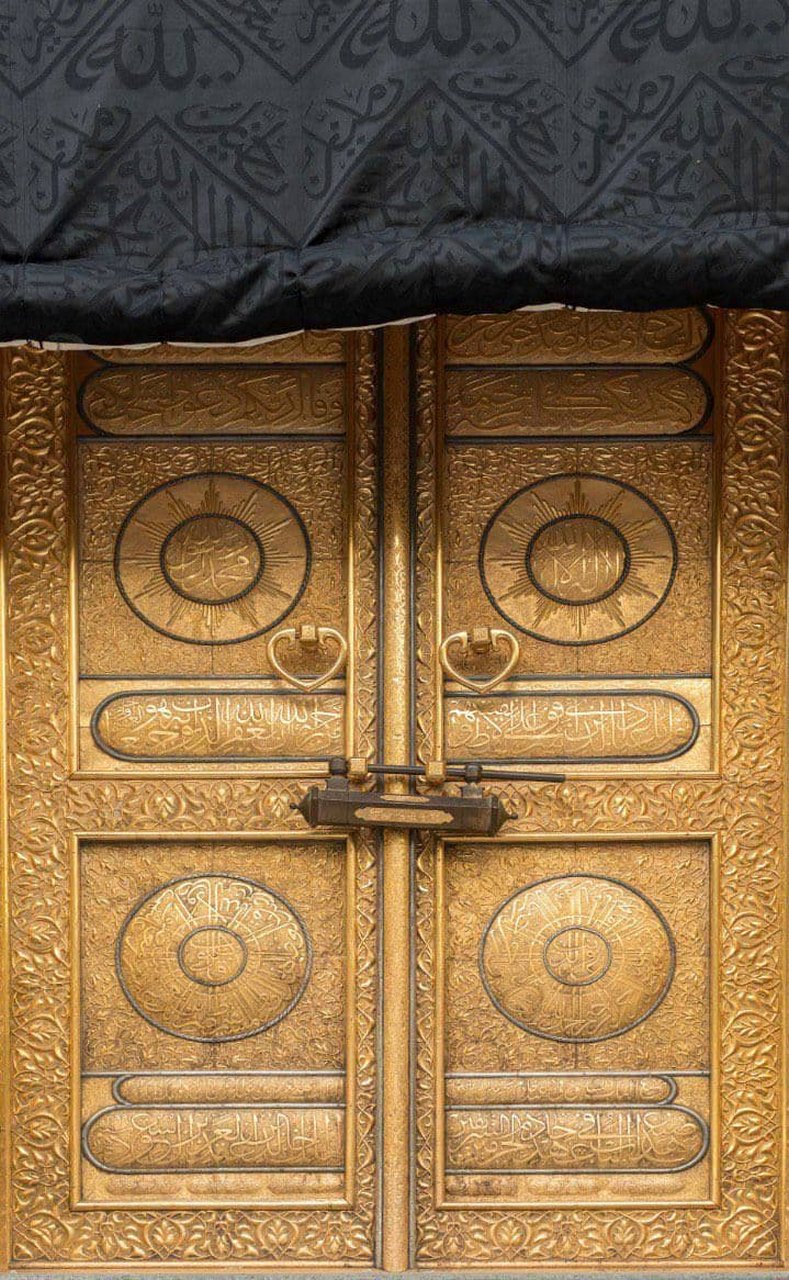Saudi officials have replaced the Kiswa (the cloth cover) of the Kaaba to commemorate the Day of Arafat and the start of Eid al-Adha, on Monday.
The process of changing the Kiswa occurs annually on the second day of Hajj under the supervision of the President of the Holy Mosque.
The Kiswa covers the Kaaba, the cube-shaped building that Muslims believe was originally built by Prophet Ibrahim and his son Ismail, at the center of Mecca’s al-Masjid al-Haram (the Grand Mosque). Muslims face the qibla or direction of the Kaaba, which is considered the “house of God,” when performing prayer anywhere in the world.
Every year, the gatekeepers of the Kaaba carry out the task of changing the black cloth draped over the holy structure.
Deputy Head of the General Presidency for the Grand Mosque Affairs Dr Saad bin Mohammad al-Mohaimeed said, in a statement, that the Kaaba cloth is made of 670 kilograms of high-quality silk, 120 kilograms of gold threads, and 100 kilograms of silver threads.
This year, about 200 Saudi craftsmen were engaged in producing the black curtain at King Abdulaziz Complex for Holy Kaaba Kiswa, al-Mohaimeed said.
Officials dismantled the old Kiswa and installed the new one, then installed it in the corners and surface of the Kaaba.\
The presidency secured all precautionary measures and means of prevention and safety so that the process took place in the utmost levels of security and safety, SPA reported.
The Kiswa was first used when the fourth century Yemeni King Tubba ”instructed the leaders of (the) Jurhum tribe to maintain its purgation and make a door and a key for it,” according to ninth-century historian Muhammad ibn ‘Abd Allah al-Azraqi. Since then it has become the Kaaba’s most distinguishable feature.
 Alghadeer TV Alghadeer TV
Alghadeer TV Alghadeer TV
